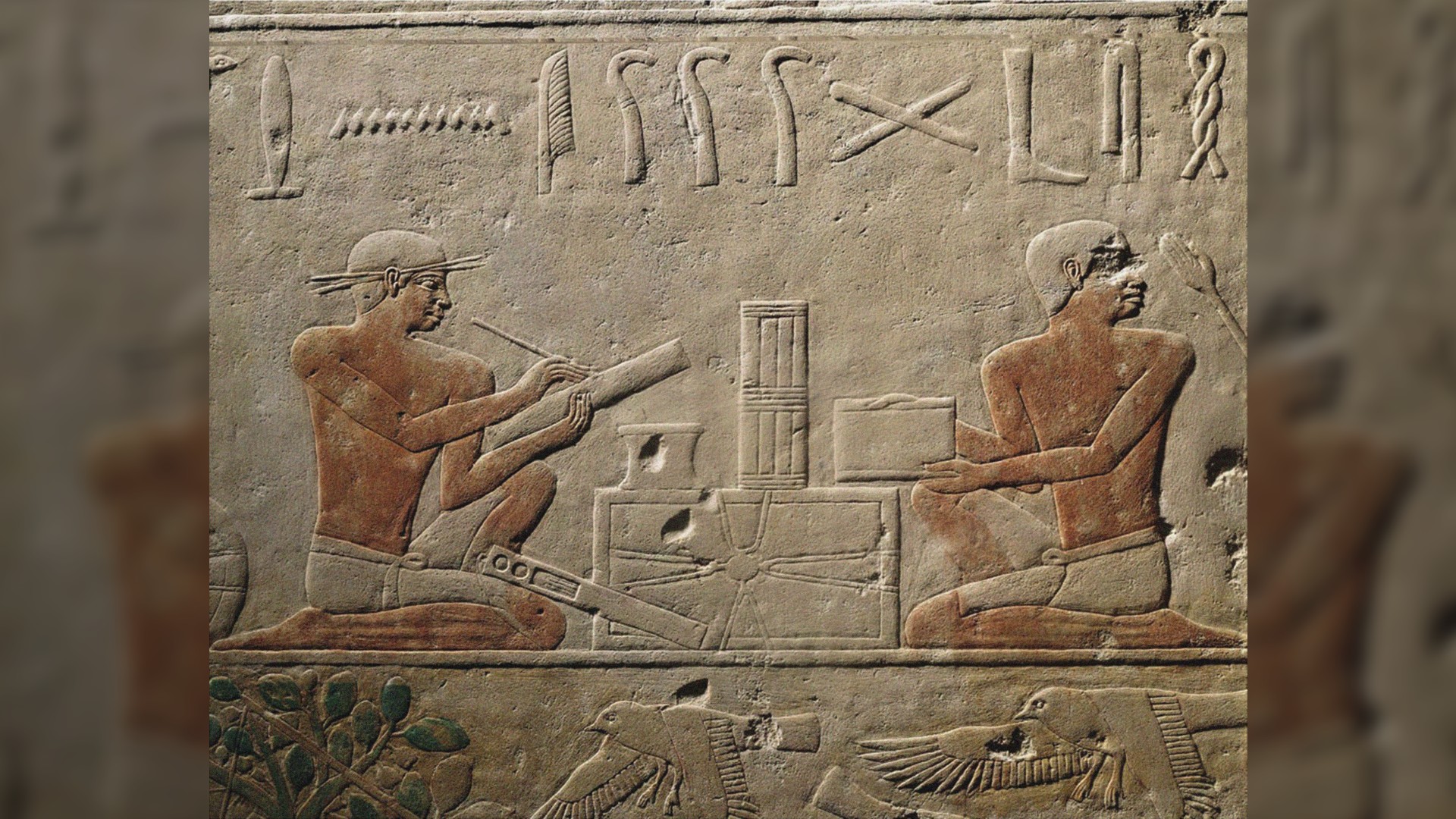Why does ancient Egypt’s distinctive art style make everything look flat?
4 min read [ad_1]
In 1986, the band “The Bangles” sang about “all the old paintings on the tombs” where the figures they depict are “strolling like an Egyptian.” Though he was neither an artwork historian nor an Egyptologist, songwriter Liam Sternberg was referring to a single of the most putting features of historical Egyptian visual artwork — the depiction of people today, animals and objects on a flat, two-dimensional plane. Why did the historic Egyptians do this? And is historical Egypt the only tradition to generate artwork in this style?
Drawing any item in three proportions requires a distinct viewpoint to generate the illusion of perspective on a flat floor. Drawing an item in two dimensions (height and breadth) demands the artist to depict just a single area of that object. And highlighting just one particular area, it turns out, has its pros.
“In pictorial representation, the outline carries the most information,” John Baines, professor emeritus of Egyptology at the College of Oxford in the U.K. told Reside Science. “It is easier to realize anything if it is defined by an define.”
Linked: What did ancient Egypt’s pharaohs stash inside the pyramids?
When drawing on a flat surface area, the define becomes the most crucial aspect, even while quite a few Egyptian drawings and paintings include specifics from various sides of the item. “There is also a wonderful aim on clarity and comprehensibility,” Baines said.
In several inventive traditions, “measurement equals worth,” in accordance to Baines. In wall artwork, royalty and tomb proprietors are normally depicted considerably much larger than the objects bordering them. If an artist have been to use a 3-dimensional point of view to render human proportions in a reasonable scene with a foreground and qualifications, it would go from this theory.

The other reason for depicting numerous objects on a flat, two-dimensional aircraft is that it aids the development of a visible narrative.
“A person only has to assume of [a] comedian strip as a parallel,” Baines stated. There are widely accepted ideas that organize how historical Egyptian visible artwork was produced and interpreted. “In origin, crafting was in vertical columns and shots were being horizontal,” Baines reported. The hieroglyphic captions “give you data that is not so conveniently put in a picture.” A lot more frequently, these scenes will not characterize precise events “but a generalized and idealized representation of lifestyle.”
Having said that, not all pictorial illustration in ancient Egypt was purely two-dimensional. In accordance to Baines, “Most pictorial artwork was placed in an architectural location.” Some compositions on the partitions of tombs incorporated reduction modeling, also regarded as bas aid, in which a typically flat sculpture is carved into a wall or mounted onto a wall. In the tomb of Akhethotep, a royal formal who lived for the duration of the Fifth Dynasty around 2400 B.C., we can see two scribes (demonstrated underneath) whose bodies are sculpted into the flat surface area of the wall. As Baines described, the “reduction also versions the human body area so you cannot say that it is really a flat outline” simply because “they have texturing and surface depth in addition to their outlines.”
In quite a few examples dating as far back as 2700 B.C. in the Early Dynastic Period of time, artists painted on best of a reduction to add even more depth, as seen in the graphic of the two scribes below.

Egyptian visible artwork made use of “more or less universal human ways to representation on a flat area,” Baines explained.
“It [Egyptian art] affected art in the historic In close proximity to East,” such as historic Syrian (or Levantine) and Mesopotamian art, Baines said. The exact same conventions can be observed in numerous other historic traditions of artwork. Maya artwork also works by using pictorial scenes and hieroglyphic script. While classical Greek and Roman artwork is an exception, there are even illustrations of equivalent artistic conventions for two-dimensional drawing and painting from medieval Europe. As Baines defined, “It is really a program that performs very nicely and so there’s no want to change it.”
Initially revealed on Reside Science.
[ad_2]
Source connection






